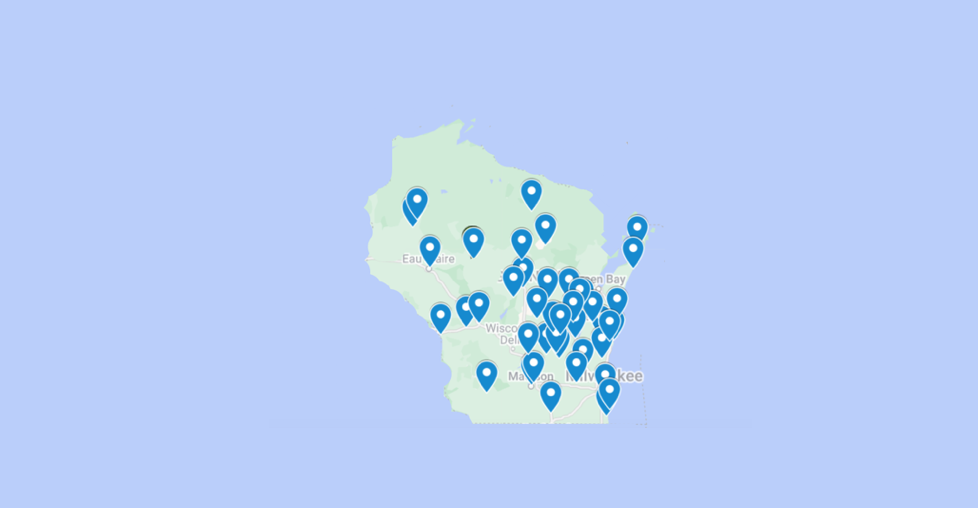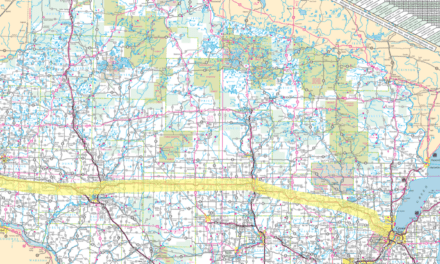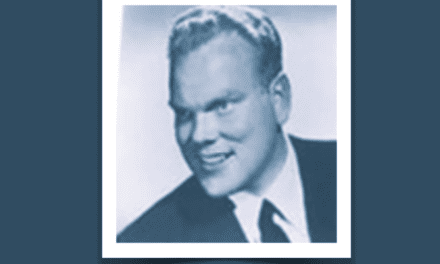Did you know?
German POW camps during World War II were established across various locations in Wisconsin. Approximately 425,000 German prisoners lived in 700 camps throughout the United States with more than 20,000 housed in Wisconsin. The locations here helped meet the state’s need for agricultural labor and Wisconsin’s German heritage facilitated easier management of the prisoners.
Although there is not one central record of where these camps were located, through official records, oral history, local historical societies and published accounts, here are some of the locations where these camps were found and/or the prisoners worked.
- Camp McCoy in Sparta, Monroe County, was the primary base camp in Wisconsin, from which many branch camps operated.
- Camp Rhinelander was located near Rhinelander, utilizing a former Civilian Conservation Corps camp.
- Camp Hartford in southeast Wisconsin, which notably used an art deco ballroom for housing prisoners.
- Sheboygan had a camp where POWs worked in local industries like canning.
- Plymouth had a branch camp at its fairgrounds, with prisoners employed at nearby factories.
- Barron housed POWs in a camp where they contributed to local agricultural work.
- Columbus in Columbia and Dodge Counties had a branch camp.
- Antigo, Appleton, Beaver Dam, Cambria, Chilton, Cobb, Eau Claire, Fish Creek, Fond du Lac, Fox Lake, Fredonia, Green Lake, Hartford, Hortonville, Jane, Janesville, Kenosha, La Crosse, Lodi, Madison, Manitowoc, Menasha, Milwaukee (Camp Billy Mitchell where Mitchell Airport now stands), Oconomowoc, Oshkosh, Portage, Racine, Rice Lake, Ripon, Sheboygan Falls, Stevens Point, Sturgeon Bay, Tomah, Watertown, Waupaca, Wausau, Wautoma, Wisconsin Rapids, and Withee also had POW camps or branch facilities at some point.
These camps were strategically placed away from industrial sites that were vital to the war effort. They also were able to provide labor where it was most needed, particularly in agriculture due to the labor shortages caused by the war. All labor was voluntary, not forced, and prisoners were paid similar to the wages earned by members of the military. The presence of these camps in such widespread locations across Wisconsin reflects the state’s significant role in accommodating and utilizing POW labor during the war.
Echoes of War: German POWs in the Heart of America
In the rolling farmlands of Wisconsin, a story unfolded during the 1940s that might seem improbable to those unfamiliar with the era’s nuances: German prisoners of war (POWs) found themselves not on the battlefields of Europe, but working the fields of America’s Dairyland. This chapter of World War II history offers a unique lens through which to view not only the war but also the societal dynamics of the time.
A Unique Prison Experience
From 1942 to 1946, the United States housed over 400,000 German POWs, many of whom were sent to camps across the Midwest, including Wisconsin. The Geneva Conventions dictated that POWs should be treated humanely and allowed to work under supervision, leading to their employment in agriculture, a sector straining under the demands of war. Wisconsin, with its rich agricultural heritage, became a prime location for these labor camps.
The camps varied in size and structure, but all aimed to adhere to international standards of prisoner treatment. POWs were paid for their labor, albeit at lower rates than American workers, and could use their earnings for canteen purchases or to send money home. Education was also provided, with classes in English, history, and even American culture, often taught by local teachers or POWs themselves. This educational aspect was somewhat ironic, given the war’s context, yet it served as a bridge between enemies, fostering an environment of cautious understanding.
Daily Life and Interactions
Life for German POWs in Wisconsin was markedly different from the European front. They worked on farms harvesting crops, in canneries, or at dairy operations, contributing significantly to the war effort by filling the labor gap left by soldiers abroad. The workday was long but fair, with reasonable conditions compared to their military service. Moreover, it was far better than German prisoners who were sent to prisons in Russia.
Interactions with the local population were both a source of curiosity and tension. Initially, there was suspicion and animosity towards the POWs. However, as time passed, many locals began to see them less as enemies and more as fellow human beings caught in the maelstrom of war. Some POWs formed friendships with their American guards or even with farmers’ families, occasionally leading to cultural exchanges where POWs taught German songs or shared recipes.
Cultural and Psychological Impacts
The experience in Wisconsin left a lasting imprint on the POWs. For many, it was their first encounter with American life, its freedoms, and its contradictions. The relative kindness they experienced, juxtaposed against the backdrop of global conflict, often left them with mixed feelings about the war and their own national identity.
For Wisconsinites, the presence of German POWs was a living reminder of the war’s reach and the humanity of their enemies. It challenged preconceived notions, leading some to advocate for peace and others to reflect on the nature of conflict and reconciliation. Post-war, some POWs returned to visit their old work sites, reconnecting with Americans who had once been their captors but had become, in some cases, lifelong friends.
Legacy and Memory
Today, the story of German POWs in Wisconsin is a lesser-known but poignant piece of WWII history. The remnants of these camps are few, with some converted into museums or historical sites that narrate this unusual wartime chapter. The story serves as a testament to the complexities of war where enemies could become neighbors, albeit briefly.
The legacy of these camps is multifaceted. They remind us of the capacity for humanity amidst hostility, the possibility of dialogue over division, and how war can inadvertently foster unexpected connections. In Wisconsin, the narrative of German POWs is not just about war; it’s about humanity, adaptation, and the often-unseen threads that weave together during times of global upheaval.
The tale of German POWs in Wisconsin during WWII is a microcosm of war’s broader impact on societies. It challenges the binary of friend versus foe and showcases how shared work, cultural exchange, and mutual respect can humanize even the most adversarial relationships. As years pass, this story remains a compelling reminder of how history’s undercurrents can connect us in ways we might never predict.
NPR Interview with Author of Stalag Wisconsin
















